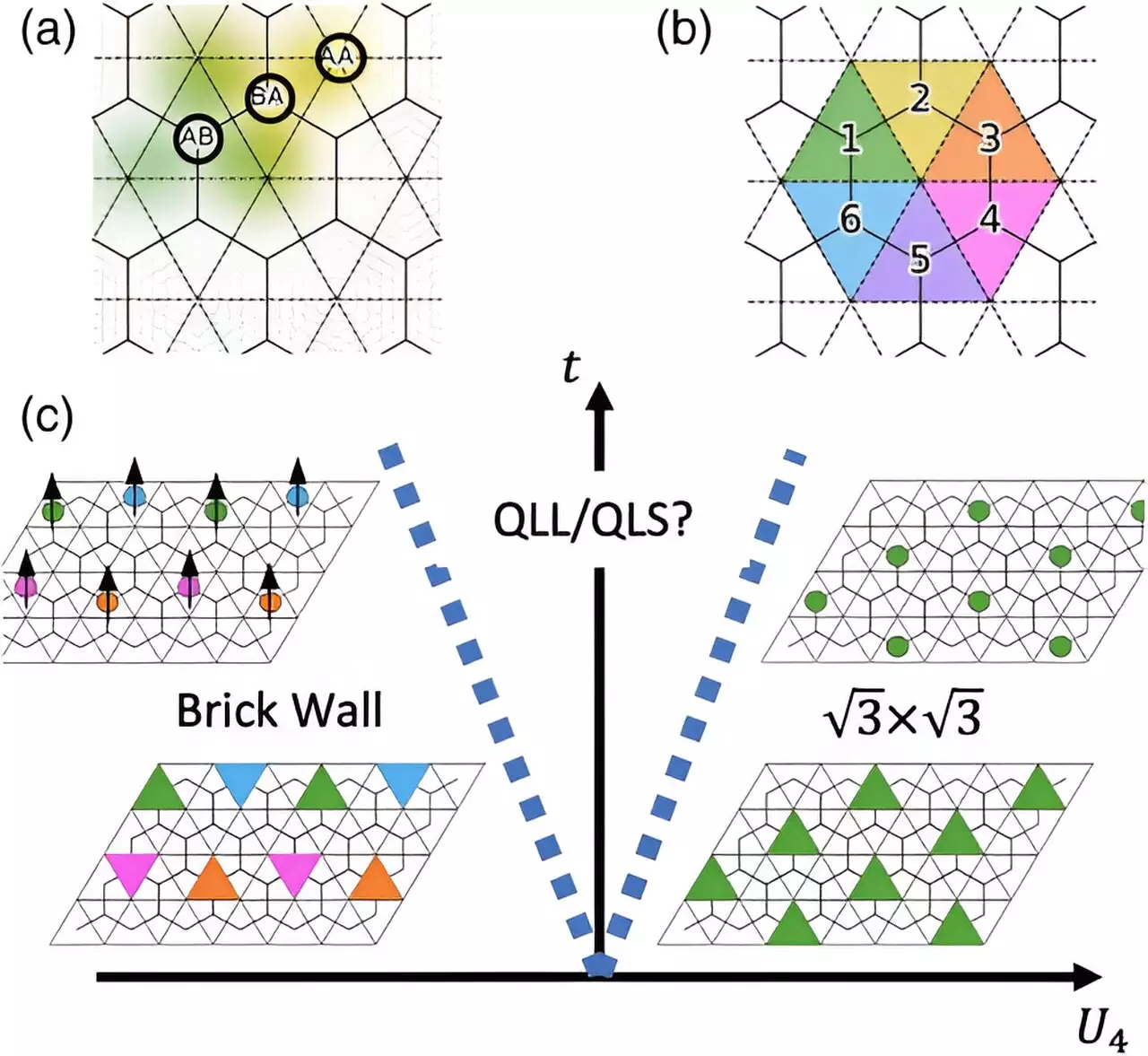The concept of fractionalization, where a collective state of electrons carries a charge that is a fraction of the electron charge, has long intrigued condensed matter physicists. Not only is this phenomenon intellectually captivating, but it also holds promise for potential applications in quantum computing. Traditionally, achieving fractionalization required the use of magnetic fields to suppress kinetic energy and enhance interaction effects. However, the limitations of specialized labs with strong magnetic fields have prompted researchers to explore alternative strategies. In a recent article published in Physical Review Letters, a team of scientists from the Kim Group at Cornell University presents a unique approach to achieving fractionalization without the need for a magnetic field.
The Kim Group envisions leveraging the geometric properties of twisted bilayer graphene (TBG) to predict new effects related to fractionalization. Unlike conventional electron wave functions, which are typically centered at lattice sites, the electron wave function in TBG is spread over multiple moiré lattice sites. Furthermore, the wave function takes on an anisotropic, three-leaf clover shape. This peculiar aspect of electron behavior in TBG paves the way for exploring the existence of fractional correlated insulator phases.
Properties of Fractional Correlated Insulator Phases
Through their research, the scientists propose several key properties of fractional correlated insulator phases:
1. Excitations (or particles) carry fractional electric charges, which is an unusual characteristic and a hallmark of fractionalization.
2. Some of these fractional excitations exhibit “fractonic” behavior, meaning they can only move in specific directions.
3. An emergent symmetry has been identified, which plays a vital role in unifying the behavior of fractional excitations in these phases.
The discovery of fractional correlated insulator phases in TBG not only provides a physical setting for exploring novel theoretical concepts but also opens up avenues for technological advancements. The observed fractionalization without the need for a magnetic field has significant implications for the development of new materials and quantum computing applications. However, the researchers emphasize that this is just the beginning, and there is much more to uncover.
Collaboration with Experimental Colleagues
To confirm their theoretical predictions, the Kim Group is collaborating with experimental colleagues. The next step in their research involves conducting experiments to validate the existence of fractional correlated insulator phases in TBG. This interdisciplinary collaboration between theorists and experimentalists is crucial in pushing the boundaries of knowledge in condensed matter physics.
The exploration of fractionalization in condensed matter physics has taken a new direction with the research conducted by the Kim Group at Cornell University. By harnessing the geometric insights in twisted bilayer graphene, the scientists have proposed the existence of fractional correlated insulator phases characterized by unique properties. This novel approach to achieving fractionalization without the need for a magnetic field holds immense potential for technological applications and deepening our understanding of emergent symmetries and fractonic dynamics. As the researchers themselves acknowledge, this is just the beginning, and further investigations are necessary to fully explore the implications and possibilities presented by this groundbreaking discovery.


Leave a Reply